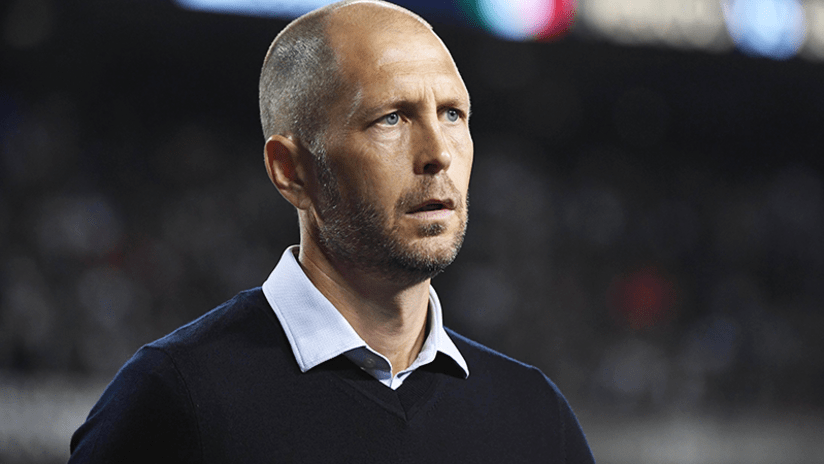The US men’s national team want to hit the ground running in 2021, and to that end a combined senior and under-23 group began their January camp in Bradenton, Florida this week.
But the year ahead will be both a marathon and a sprint, thanks to the onset of Concacaf’s condensed World Cup qualifying process, the knockout stages of the Concacaf Nations League and the Gold Cup – not to mention the U-23s’ Olympic campaign. It figures to test the program’s depth like never before, and all on the back of a pandemic-marred 2020 that severely hampered efforts to prepare the collective player pool
“It's a lot. It is a lot,” USMNT head coach Gregg Berhalter said in a one-on-one interview with SiriusXM’s Glenn Crooks on Monday, part of the opening day of the annual United Soccer Coaches convention. “One thing I struggled with a little bit last year in 2020 is just having all these different groups. If you think about January camp was one group of players, then we went to Europe, we had another group of players because we couldn’t all come together, and then December camp we had another group of players.
“At times it gets frustrating because you just want to get the group together, you want to get your top players together and just go. But I think that's the beauty of coaching the US team, is that you get to see a lot of players, you get to work with a lot of players, you get to influence a lot of players and that's been really fun. And now when we come up to year like 2021, now you get to put all that into practice.”
Berhalter will have substantial reserves of talent to call upon, as a growing list of American players shine in some of Europe’s top competitions as well as in MLS and beyond. But he and his staff also face a complex matrix of depth charts, calendars, call-ups, fitness concerns and relationships with clubs that will require intensive juggling from window to window.
“We're going to have to call on 30 to 40 players next year. It's going to have to be, because of the jammed calendar,” said the coach. “It's unreasonable to say that we're going to take a guy, say a top performer in MLS, Jordan Morris, for example, and he's going to miss all of June and July being with the national team. It’s just not going to happen.
“Even though we're allowed to, it's going to be really difficult to do something like that to the clubs. So we're going to have to work, we're going to have to get creative, and the rosters are going to be jumbled up, I think, in Nations League and Gold Cup, and then World Cup qualifiers is where it's going to be important to have the whole group together and that's going to be a must. And those games are going to be fun.”
If there’s a positive to the congested schedule ahead, it’s the order in which it plays out. Starting the year with camps and friendlies, then shifting into the Nations League semifinals and final/third-place match and Gold Cup come summer, should allow the USMNT to ramp up towards the biggest priority of all: the road to Qatar 2022.
“The idea is to keep everyone engaged and everyone on the same page, and everyone up to speed with what we do and how we want to play,” said Berhalter, who has been using FaceTime, Zoom and other communication methods to keep his players tapped in despite distance, lockdowns and the like. “Just having a really good understanding of what the player pool looks like, [so] then when we need to make the difficult decisions when it comes to qualifying, we can get it right, because it's absolutely crucial that we have our strongest team, that we have enough depth, and that we're able to perform at a high level in qualifying.
“In terms of Nations League and Gold Cup, those are two events where there's trophies awarded and we want to compete to win them, there's no question about it. That that will give us one final opportunity before qualifying to test guys and put them under pressure to perform.”













